There are many portrait artists in Korea. However, Artist Kim Dong-Hyun stands out from them in some respects. Kim tries to depict the inner feelings of the people rather than covering only what he sees from their external appearance.

“People have faces that are different from one another,” he said. “I try to see and portray the inside of the person by studying what appears on the outside of the person’s face.” Then he said that “I work hard to learn the spiritual and ideological aspects of the person and the character inside the person.”
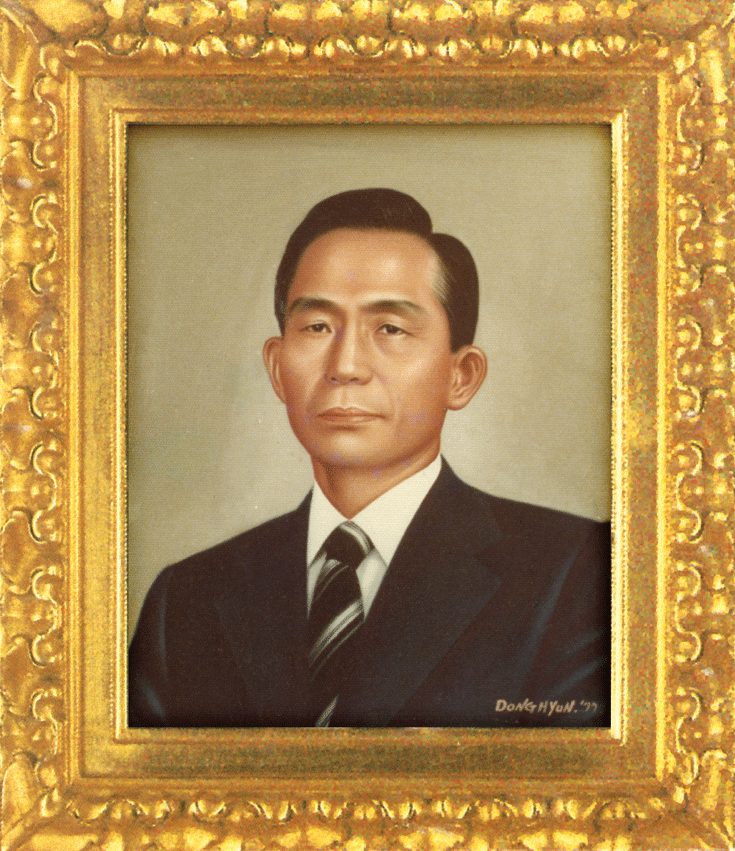
Eighteen years ago, Artist Kim painted the portrait of an aged woman. The sons and daughters of the old woman told Kim in profound gratitude that the painting was exactly like their mother who came back alive. They repeatedly complimented Kim for the painting that was “identical with our mother.”
Kim has painted the portraits of so many people for the past 40 years, which include one of Secretary General Ban Ki-moon of the United Nations, which he painted on the occasion of his re-election to the post in 2011.
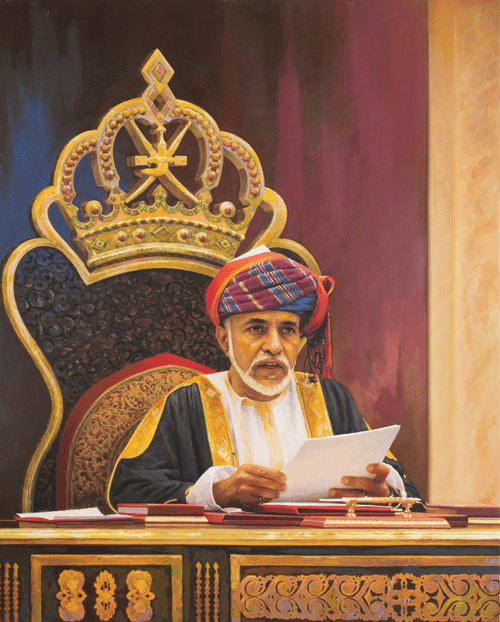
Kim also painted the portrait of Ranan Raymond Lurie, the cartoonist of The New York Times. Lurie thanked Kim and told him that he really liked the portrait painting.
As was briefly mentioned earlier, Artist Kim always tries to depict in his work the inner aspects of the persons he covers, including their spiritual living and inner thoughts.
Artist Kim disclosed that there was one thing he had always wanted to do. He wanted to paint the spiritual world instead of what is outwardly visible in the present world.
“ I believe that after one dies there is a spiritual world,” asserts Kim.
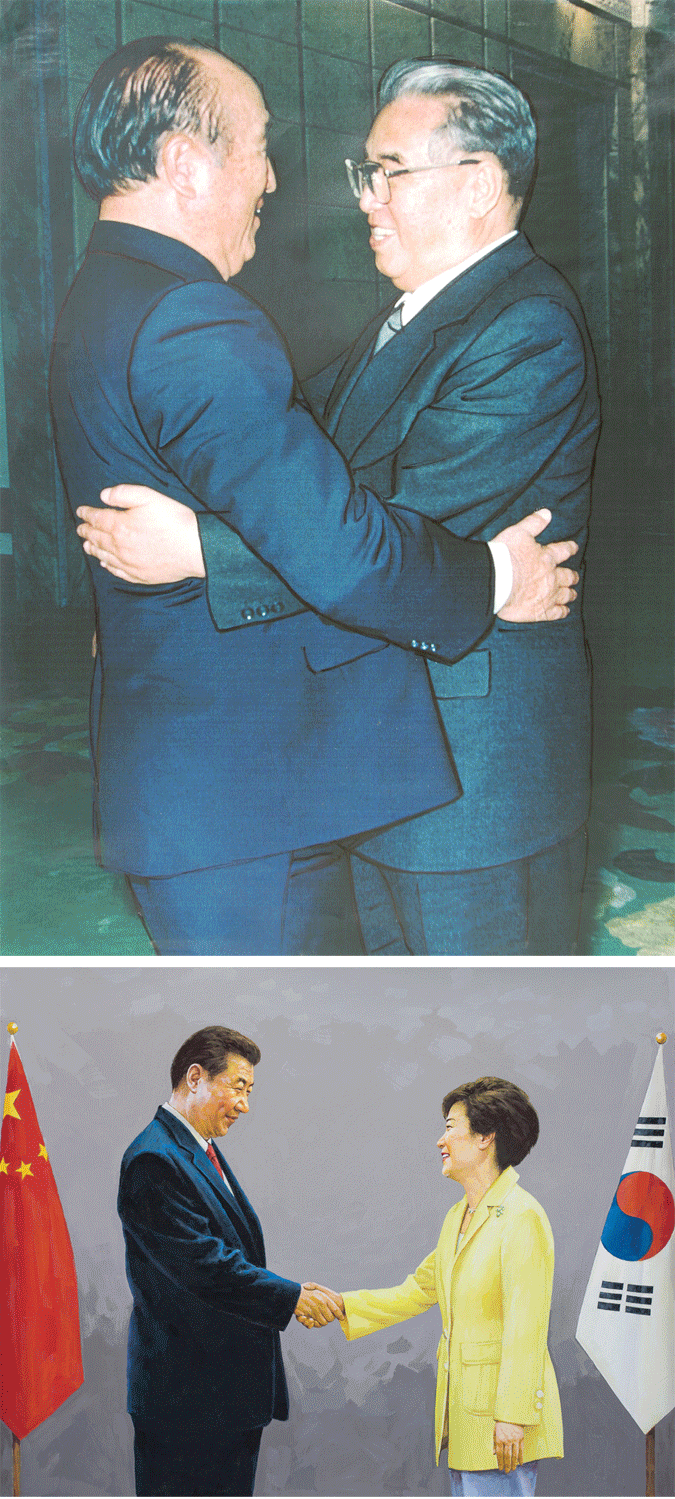
What would the spiritual world look like? He closes his eyes and tries to be lost in meditation to experience the vast expanse of the spiritual world. He prays for his successful completion of the work.
Korean Peace Art Exhibition:
Following the end of the Summer Olympic Games in Seoul in 1988, Kim visited Japan to seek the possibility of hosting an art exhibition by Korean painters.
For ten years since 1995, Kim hosted the Korean Peace Art Exhibition in Japan. The purpose of the exhibition was to promote cultural exchange between the two divided parts of the Korean peninsula based on his belief that peaceful unification of the Korean peninsula could come only after recovery of the homogeneity of the Korean people now divided between the north and south.
For this exhibition, approval was obtained from the authorities of both the Republic of Korea (South) and North Korea. For this purpose, artists from both South and North Korea took part in the exhibition once every year. It was not an easy task, but Kim and other promoters successfully held the inter-Korean art exhibition thanks to cooperation and support provided by art-related Japanese companies and organizations.

In 1999, Artist Kim joined the ‘Sketching Tour of North Korea by Senior Korean Artists’ with the support of Japanese art circles. The participating painters included Lee Mong-moo, Kwon Ok-yeon, Lee Doo-sik, Min Kyung-gap, Park Kwang-Jin, Lee Jong-sang, Ha Jong-hyun and Lee Wal-jong. Also a number of lady artists took part in the tour, who included Kim Jong-Bok and Lee Sook-ja.
It was the first time for the senior South Korean artists to have such a sketching tour of North Korea since the division of the Korean peninsula into north and south after the end of World War II in 1945.
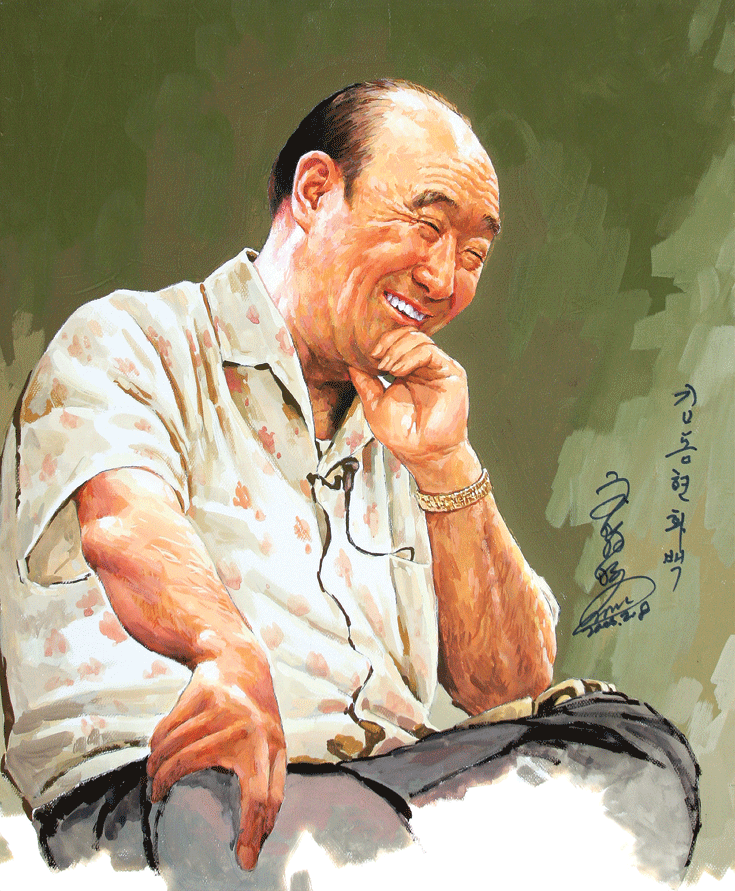
There is an interesting episode related with their tour of North Korea. At the famous Myohyang-san Mountain in North Korea, the late Korean Artist Lee Doo-sik made a sketch of one of the North Korean women guides and offered to present it to her. However, she did not receive it saying, “Sir, I will go to Seoul to get the sketch after the Korean peninsula is reunited.”
The North Korean guide warmly took care of the visiting South Korean senior artists, and even presented the South Korean liberal activists’ song, Achim Iseul (‘The Morning Dew’), with her guitar. The South Korean artists cherish the fond memories of the North Korean sketching tour. Artist Kim said, “I still have a strong desire for the unification of the Korean peninsula, and am looking forward to the day when the country becomes reunited.”


Resume of Artist Kim Dong-Hyun:
Artist Kim Dong-hyun was born in Sinan County of Jeollanam-do Province in 1946, and completed the Chief Executive Officer’s Course at the Graduate School of Business Administration at Yonsei University in Seoul in 1999.
1992: Kim opened the Lotte World Art Gallery in Seoul.
1994: Established the Donghyun Art Korea
1995-2004: Hosted ‘Inter-Korean Peace Art Exhibition in Japan’ on more than 120 different occasions.
1998: Visited Pyongyang, North Korea for the first time for the promotion of art exchange between the Republic of Korea (South) and North Korea.
1999: Made a second visit to North Korea for a sketching tour of the land and rivers of North Korea with senior 10 South Korean artists. The areas covered include the Pyongyang City (capital of North Korea), the Myohyang-san Mountains and Baekdu-san Mountain (Mt. Changpai).
2000: Took part in the World Peace Art Exhibition at the Seoul Art Center with the participation of artists from 16 countries of the world.
2002: Visited Pyongyang of North Korea for the third time joining a South-North Cultural Exchange Program. Hosted the South-North Peace Art Exhibition at the Sejong Cultural Center in Seoul on the occasion of the World Cup Football Game.
2004: Took part in the World Peace Art Exhibition in Shanghai, China represent the Republic of Korea (South)
2007: Visited North Korea for the fourth time as part of South-North Cultural Exchange Program.
2008: Took part in the Yokohama World Peace Art Exhibition in Japan.
2011: Took part in the Harbin Art Fair in the Northeast Region of China.
2012: Took part in the Hongkong Art Fair.
Artist Kim is currently a member of the Korean Fine Arts Association.
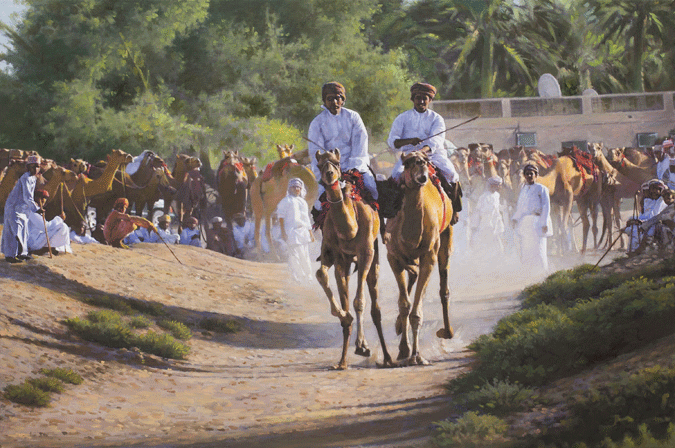
History of Korean portrait painting:Many Korean art experts assert that the artists in the Orient favored landscape painting while in the West the history of portrait paining has a much longer history. There are many reasons for this situation. However, the Korean scholars on art mostly agree that the Oriental people served the nature while the Occidentals made use of the nature. The Orientals were awe-stricken by the formidable power of the nature and worshiped it through their paintings, while the Occidentals took advantage of the nature.
Thus, in the Oriental paintings the human beings are small and the natural features large. In the Occidental paintings the nature is secondary after man and is used only as the backdrop of the people.
However, this situation does not mean that the Korean portrait painting has a short history. It is only that the ancient Korean artists favored landscape paintings to portrait (figure) paintings.
Excellent Korean portrait and figure paintings are found on the tomb murals of the royalties and nobilities of the Goguryeo Kingdom (BC37-AD668).
Many erstwhile Korean artists covered both the landscape and figure (portrait) paintings and they include the famed Joseon Dynasty Artist Kim Hong-do (1745-1806).
Figure (portrait) painting flourished during the Joseon Dynasty (1392-1910). Many portrait artists painted the portraits of the successive kings of the Dynasty. They also painted the portraits of the nobilities and generals on orders of the kings who presented them to the nobilities and generals in recognition of their meritorious deeds, and loyalty and chivalry in military operations.
Occidental portrait paintings are considered to stand out more than the Oriental paintings in that the former is done in brilliant colors and bold strokes while the Oriental portraits are mostly in light color. Also the Occidental portraits are much larger in size than the Oriental ones.
Such tendencies, however, have substantially disappeared in Korea with the passage of time. In modern Korea, many Korean artists paint portraits in oil, acrylic and various other modern painting media.
It appears that today there are few Korean artists painting portraits in the traditional Korean or Oriental fashion or technique. And in this regard, Artist Kim Dong-hyun is no exception.

